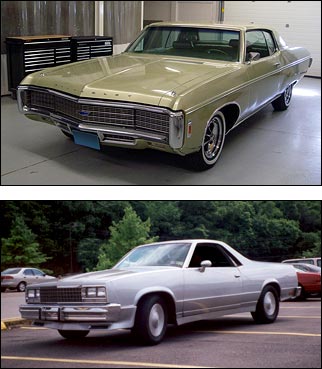|
By the 1970s, automobile manufacturers had advanced to using high quality baking paint coatings that required a 350° F (177° C) baking temperature. Two component urethanes were introduced to provide better cross-linking and cure while using less solvent. These coatings, when cured, were not affected by many solvents or spilled gasoline. Polishing was only required to remove dirt and grit. Depending on the specific paint chemistry and drying conditions, cure times ranged anywhere from three hours to overnight. Refinish materials needed to be higher quality than the alkyds and acrylic lacquers that had become the standard for the refinish industry. By the 1990s, the push for productivity led to the development of enhanced urethanes that reduced cure times to about an hour. Catalysts began to be commonly used to speed the reaction times, but pot life becomes shorter at the same time. The overall quality of refinish materials improved to meet OEM warranty repair requirements. |
 |
